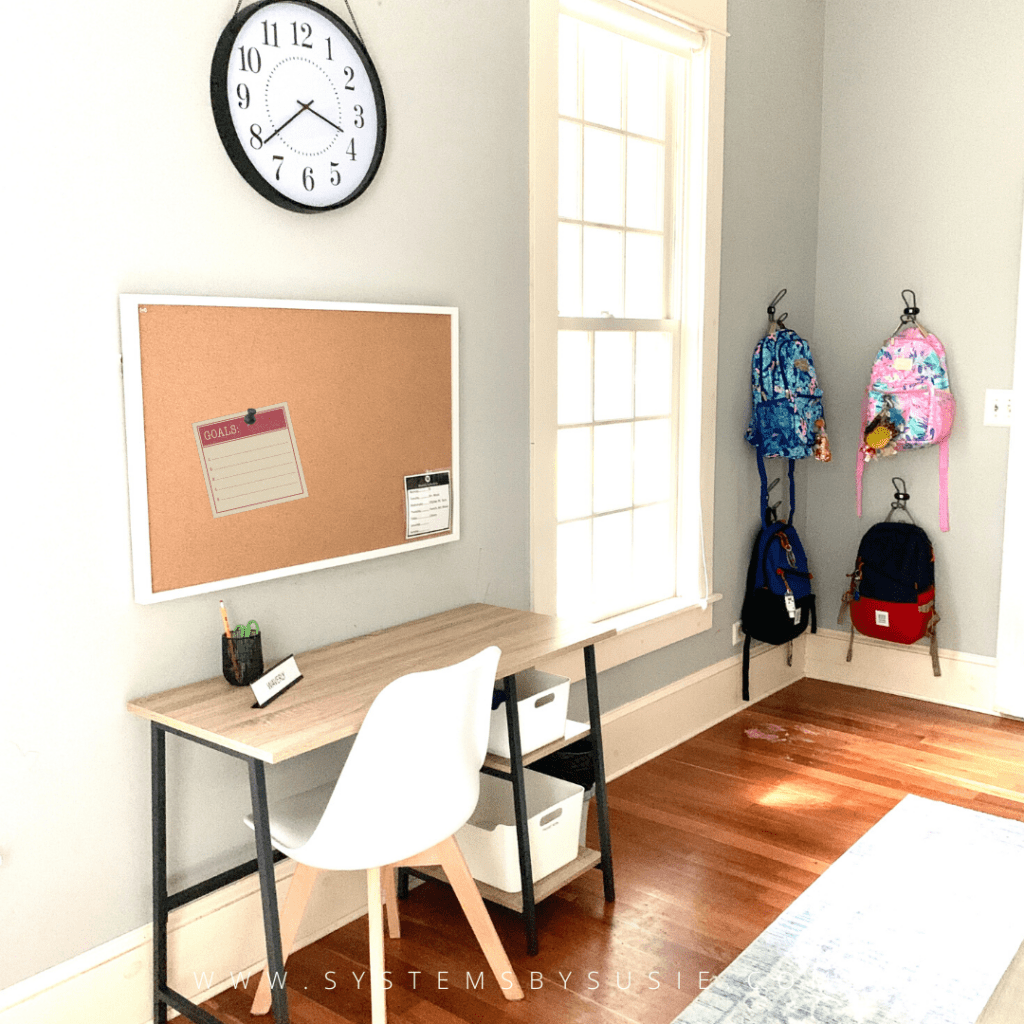From Summer to School: Preparing Your Home & Habits for the New School Year
Beep! Beep! Beep! Beep! Beep!
Ugh. Your alarm clock is going off way too early. You silence it, stifle a yawn, and realize it’s the first day of school. Back to routine. Back to structure. It can be a jolt to the system (for you and your kids) if you’ve enjoyed lazy summer mornings for the past three months. Suddenly it’s back to the bus stop at the crack of dawn. Or getting up earlier to drop the kids off before starting your busy day.

Let’s work together to make that first day’s hustle and bustle a little less jarring. To ensure a successful start, it’s important to prepare both your home and mindset. Below are SIX practical tips and strategies to help you navigate this transition and set the stage for a productive year.
1. Establish routines and schedules early.
Start gradually introducing consistent wake-up and bedtime routines at least a week before school starts to help regulate sleep patterns. Schedule early morning activities for the last week of summer to get everyone used to getting up, getting ready, and out the door quickly.
Create a visual morning routine for younger kids to check off items as they go. Add an after school daily schedule in a common area that includes time for homework, extracurricular activities, meals, and relaxation/family time. Setting routines will provide a sense of stability and make the transition smoother.

2. Sort and update school supplies.
Take inventory of your existing school supplies (both for home and school) and make a list of items that need to be replaced or replenished. Clean out last year’s backpacks if you haven’t already and give them a wash. (Same with lunch boxes.) Organize supplies to ensure everything is readily accessible when school starts. This simple step will save time and reduce stress when it’s time to pack for the first day of school.

3. Create a dedicated study space.
Setting up a designated study area in your home is helpful for keeping your afternoon routine flowing. Clear out any clutter and distractions, add some basic school supplies, and a comfy seat and lamp. This space doesn’t need to be fancy, just quiet. A kitchen counter will do.
If you need to separate kids during homework time, or there’s just not space for a dedicated desk, use caddies or rolling carts to keep things flexible and bring the homework station to them! Find the system that works best for you.

4. Organize notes and supplemental tools
Organize any notes or study materials/learning aids from the previous year so they’re easy to find if you need to refer to them this year.
For younger students this might look like flash cards, manipulatives, or workbooks. Keep everything that has helped them be successful in the past easily accessible. For flash cards, have a dedicated bin or tote with all the materials they’ll need to make more this year.
For older kids, organize notes using a system that works best for them, whether it’s scanning and creating digital folders or using physical binders. Being proactive about creating a reference system will make homework that much easier, especially for subjects that build on the previous year’s materials, like science, languages, and math.

5. Set goals and prioritize
Reflect on the previous academic year and set goals for the upcoming one. Encourage your child to identify areas of improvement and establish targets for personal and academic growth. Help them break down these goals into smaller, actionable steps. (A lot of modern planners include goal-setting pages. This could be a great place to track new accomplishments!)
It’s a great idea to post these goals somewhere easily visible, too, like on a bathroom mirror or the fridge. Check in at the end of each grading period (even if the goals aren’t grade related) and ask what you can do to support your kiddo if they are struggling. Are there new goals they’d like to work on?

6. Open lines of communication
Reach out to your child’s teachers before school starts to say hi. It’s never fun to have your first interaction be when there is an issue to discuss. Introduce yourself, ask questions, and discuss any concerns or special considerations you have for your kiddo. Save their contact information in your phone and email program.
It’s also a good time to have your child reconnect with friends or classmates they may have lost touch with over the summer. Familiar faces can add some excitement and anticipation to what can sometimes be a stressful time.
This is also the time to download all the apps your teacher or school recommends you have – on your phone and on your child’s tablet or the family computer. (Check the school website for a list, or you may be provided the information by the teacher shortly before or just after school begins.)

Need more guidance? Join our 5-Day Back to School Challenge. It will run from August 21st to August 25th. Each day we’ll deliver a quick organization project right to your inbox, with three tasks to accomplish and links to any suggested products. It’s the motivation you need to get your house ready to be the calm in the storm!
In case you missed it earlier this month, be sure to check out my Favorite Organization Products for Back to School blog for a few more helpful tips and tricks.
Happy Organizing!






